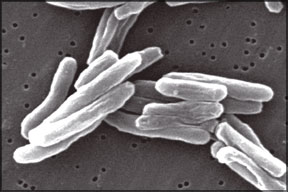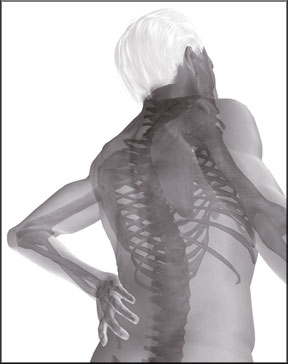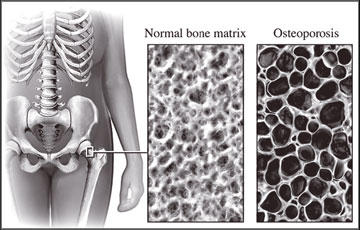|
Health Watch
March 24 was World TB Day:
TB need not be terminal
The world TB day which is held each year on March 24 is intended to
promote awareness, knowledge and motivation for action against
tuberculosis worldwide. Hundred and thirty one years ago, after the
discovery of the Koch's bacillus, TB, even today remains an epidemic in
much of the world despite the fact that effective cures have been made
available for decades. This greatest killer of human beings in all
history still at work despite many scientific breakthroughs.

Currently tuberculosis has become the deadliest infectious disease in
the world and the number one infectious killer, causing 3 million deaths
per year both amongst youth and adults. This has such serious
implications to the world economy, because tuberculosis kills or
disables mainly young people, who form the productive sector of the
economy, so much so that the World Health Organization declared
tuberculosis a global emergency in 1993.
Tuberculosis, appearing in forms resistant to multiple drugs (MDR TB)
that cannot be cured by once effective medicines together with its
deadly ally, the Human Immunodeficiency Virus (HIV) has emerged as one
of the most potent threats to the existence of mankind and the biggest
threat to the world economy.
Why cannot tuberculosis be eliminated? Very simply, it is due to the
low priority that tuberculosis has been assigned by health policy-
makers. In many low to middle income countries, less than 1% of the
annual health budget is allocated for tuberculosis - unbelievable, but
true. Why this silence? Is it because Tuberculosis is something to be
swept under the carpet, covered up, and its existence ignored? The
tragic consequence is because of inadequate funding, inefficient
tuberculosis control programmes have actually led to a worsening of the
world tuberculosis situation.
This is because the patients are not cured, but do not die of the
disease either, leaving a pool of inadequately or improperly treated
patients disseminating multi-drug resistant tuberculosis in the
community. In other words, in a poor tuberculosis control programme many
patients will die of the disease, true, but there will also be half
treated half dead patients disseminating the disease to healthy people.

Also, if there were no tuberculosis drugs at all in a country, there
would be no multi - drug resistant tuberculosis for it is improper use
of anti- tuberculosis drugs that creates multi -drug resistant
tuberculosis. In other words, multi drug resistant tuberculosis is
entirely man made by doctors, sometimes the patients themselves or the
drug companies. Doctors because they may prescribe drugs in the wrong
dosage, wrong combination or the wrong number of drugs, due to
ignorance. Patients, because they have not been told the correct dosage
or combination or because, if the patient has to buy the drugs (as
happens when the patient consults a physician privately), he /she may
buy less than the prescribed amount of drugs or take lesser than the
prescribed dose, to make the drugs last longer, or because he has no
money to buy all the drugs for the prescribed period in addition to
paying the consultant's fee. The drug companies, because they may
produce poor quality drugs which may not have the correct quantity of
the drugs in them.
Patient supervision
However, all is not gloomy. It has been shown conclusively in
countries poorer than Sri Lanka, such as Nepal and Bangladesh (with per
capita GNP of around US$200, compared to a per capita GNP of US$ 840 for
Sri Lanka) that more than 90% of Tuberculosis patients can be cured and
the emergence of multi drug resistant tuberculosis controlled if the
treatment of tuberculosis patients is completely supervised. In other
words, if someone (Nurse, Health, Volunteer worker, public health
worker, a relative ) actually watches the patient swallowing the drugs.
Tuberculosis patients (or for that matter any patient) have the bad
habit of forgetting to take their drugs when they feel better, or
throwing their drugs away when they feel better. The very efficacy of
modern anti tuberculosis drugs is in a way disadvantageous, because
patients feel normal too soon, leading them to forget to take their
medication or to take it irregularly. Directly supervised treatment
circumvents this hurdle and has now been shown to be the only way
rampant tuberculosis can be controlled.
As Tuberculosis has been declared as a global emergency many efforts
are being made to find new effective solutions and strategies in
service, design and delivery to eliminate this global menace which are
appearing in various forms.
1. New tools, drugs and strategies which are being researched and
tried out bringing effective results.
The DOTS strategy
Represents a major break through in controlling tuberculosis. No
other TB control strategy comes close to being as effective and are
affordable as DOTS.
The advantages to the community by using the DOTS strategy are
numerous.
A). Cures the patient
No other TB control strategy has consistently demonstrated such high
cure rates. DOTS produces cure rates as high as 95 percent, even in the
poorest of countries. TB programmes not using DOTS often cure only 40
percent of their patients.
B). Prevents New Infections
DOTS stops the TB Bacillus at the source by curing the infectious
patient.
A patient who is not cured will infect, on average, 10 to 15 other
people every year.
C) Stops MDR TB
DOTS makes it virtually impossible to cause a patient to develop the
incurable forms of TB that are becoming more common.
Other treatment strategies are actually causing multidrug - resistant
TB, and may be doing more harm than good.
D) Cost Effective
A six month supply of medicines for DOTS cost only $ 11 per patient
in some parts of the world. This can be less than the price of a few
bottles of aspirin. The World Bank has ranked the DOTS strategy as one
of the most cost effective of all health interventions.
E. Community Based
DOTS have been demonstrated to add as many years of life as currently
available protease inhibitors to HIV positive people. Yet, the medicines
used for DOTS are only one hundred percent of the cost.
F. Protects the workforce
Nearly 80 percent of those ill with TB are in their most economically
productive years of life. These youthful TB patients represent a
workforce nearly as large as the number of people employed by the
world's 20 biggest international corporations.
G. Protects International Travelers
There is no other feasible way to protect the world's 500 million
annual international travelers from TB. The only safeguard is to use
DOTS more widely to reduce the number of infectious TB cases worldwide.
H. Stimulates Economies
The DOTS strategy offers relatively quick payoffs to the economies of
developing countries. Studies in India and Thailand have shown that a
small investment in the DOTS strategy can save their economies, billions
of US dollars.
I. Proven Effective
DOTS has been successfully implemented in a wide variety of
conditions, including Sri Lanka, India, Tanzania, Guinea, China,
Bangladesh, New York City and Peru. Currently, nearly 70 countries have
begun using DOTS and are achieving good results.
Stop TB Strategy
2. The implementation of the “Stop TB Strategy”
Has greatly expanded the Tuberculosis diagnosis and treatment
services and has saved millions of lives. Development of new tools is a
major component of the revised global efforts to stop TB. Progress has
been made in this area. They are now in the evaluation process and will
be incorporated in to the TB control programme in the near future. New
and powerful drugs for the Chemotherapy of Tuberculosis are also been
developed and progressively introduced in to the treatment regimen.
3. Systematic Strategy for screening and monitoring high risk zones
where the population is concentrated such as,
a. Garment industries
b. Factories
c. Prison institutions
d. Rehabilitation camps
e. Elderly peoples institutions
f. Orphanages
g. Mental asylums
h. Low income communities residing in congested areas.
4. Changing of the campaign terminology strategy.
In the campaign terms such as TB suspects, defaulters, Control,
Campaign tend to criminalize the patient and patient unfriendly.
Therefore in the control of Tuberculosis, consideration is being given
to use terms which are more humane and patient- friendly which will make
the patient more co - operative.
5. Greater involvement of NGO's
Recruiting and mobilizing volunteers for treatment and supervision
which will make Tuberculosis programmes efficient.
Compared to other South Asian Countries, Sri Lanka is far ahead in
terms of quality of life, life expectancy, literacy maternal mortality.
This is a constant source of amazement to developed countries, who
wonder how we can maintain such indices comparable to a developed
country. The answer is, of course the standard of literacy and education
of the Population and the solid health infrastructure and active NGOs.
- This article was sent by The Ceylon National Association for the
Prevention of Tuberculosis (CNAPT.)
Natural way to prevent osteoporosis
M.Piratheeban
Building healthy and strong bones in teenage and early adulthood of
life is important to prevent osteoporosis and any other bone problems in
later life. Osteoporosis occurs when the body fails to form enough new
bone, when too much existing bone is reabsorbed by the body, or both. In
osteoporosis condition bone becomes weak and more fragile, which means
easily breakable even from a small fall.

In Sri Lanka among adults who are less than fifty years of age, nine
percent of women and three percent of men have osteoporosis and among
people above fifty years of age, 27 percent of women and seven percent
of men have osteoporosis. Prevention of osteoporosis should be started
at childhood. Maximum bone growth occurs at adolescence and peak bone
mass occurs between the ages of 25 and 35 years. Bone continuously
removes calcium and restores it again.
If bone removes more calcium than restoration, it may cause
osteoporosis. Let's see it in a simple way. Consider bone as bank where
you save calcium. You earn calcium (eat calcium rich foods), deposit it
in bone and your body spends it when it needs. Whether you earn (eat
calcium rich foods) and deposit the calcium or not, your body does not
consider that and it spends calcium continuously.
Therefore if you fail to earn more calcium (eat calcium rich foods)
and deposit it in bone, one day you will end up with low balance in your
account (Osteoporosis). In this bank you can deposit calcium until 30-35
years of age only, after that withdrawal only can be done. If you
deposit more calcium before 30-35 years old, you can spend throughout
your later life without ending up with low account balance
(Osteoporosis).
Let's see what you should do to deposit more calcium in your bone.
* Eat calcium and vitamin D rich foods.
* Eat five different vegetables and two to three fruits per day.

* Do at least 30 minutes of exercises most preferably all days of a
week.
* Stop smoking and limit alcohol to no more than two to three drinks
per day.
Eat calcium and vitamin D rich foods
Calcium is the major nutrient need for health bone. Ninety-nine per
cent of calcium in our body is in our bone and teeth. Everyday calcium
is lost from our body through feces, urine, sweat, skin, and hair. To
compensate these lost, it is important to get enough calcium through
diet.
Milk and milk products such as cheese, yogurt and curd are rich in
calcium and easily absorbed by our body. Other than dairy products
canned fish, small fishes, vegetables like cabbage, beans, spinach,
broccoli, okra, pulses such as soybeans, fruits like orange, dried plums
and cereals also contain a significant amount of calcium. By drinking
two or three of cup of milk, you can gain daily required calcium for
your body.
(See Table 1 for Calcium requirements for Sri Lankans. See table 2
for Calcium content of some foods.)
Vitamin D is other most important nutrient for healthy bones. Vitamin
D is important for calcium absorption from our diet and calcium
deposition in bones. If there is a deficiency of vitamin D in your body,
it will make you lose bones even though you take in enough calcium.
Therefore getting an adequate amount of vitamin D is most important. You
can get vitamin D by two ways. They are
* Diet
* Sunlight

Fishes like sardine, herrings, fish liver oil and other animal foods
are good sources of vitamin D. Egg, beef and milk also contain some
amount of vitamin D. Nowadays vitamin D is purposefully added by the
food manufacturers to increase the nutritional value of food products
such as milk powder, flavored milk packets and breakfast cereals. Read
the label and search for the words “fortified with vitamin D” or
“enriched with vitamin D” before you choose the food. Adequate exposure
to the sunlight also helps to fulfill our vitamin D need. Our skin has
ability to produce vitamin D from cholesterol. Five to twenty minutes
exposure to sunlight is enough to produce vitamin D required by our
body. Lighter skin needs less time and dark skin needs little more time
to synthesis required vitamin D. Mid-day is the best time of a day to
synthesis vitamin D, less time is needed to synthesis required vitamin D
compared to other times of a day.
Direct sunlight exposure is needed for vitamin D synthesis because
UV-B radiation that is responsible for vitamin D synthesis cannot
penetrate glasses.
Vegetables and fruits
Eat five different vegetables and two to three fruits per day. Eat at
least five different vegetables and two to three fruits per day. Fruits
and vegetables are rich in vitamins and minerals which are important for
the born health such as vitamins like vitamin K, Vitamin C, and vitamin
A, and minerals like magnesium, potassium, fluoride and phosphorus.
Exercises
Do at least 30 minutes of exercises most preferably all days of a
week Doing at least 30 minutes of exercises most preferably all days of
a week not only helps you keep away from diseases like diabetes, high
blood pressure and heart diseases, but also helps you build strong and
healthy bones. Especially weight-bearing exercises play most important
role in building strong bone.
Some examples for weight-bearing exercises are jogging, hiking,
running and stair climbing. Doing regular weight bearing exercises when
you are young (at least three days per week in your exercise plan) can
help to reach the peak bone mass and keep the bone healthy and strong
throughout your life time.
Sports like tennis, foot ball, volley ball and basket ball also help
to build strong bons. Muscle-strengthening exercises like lifting
weights, using elastic exercise bands, using weight machines and lifting
your own body weight can also help build strong and healthy bone.
Although swimming is not a weight-bearing exercise, it also helps to
build strong bones But these exercises are not recommended to the people
who are already affected by osteoporosis and have risk of osteoporosis,
because these exercises may cause bone breakage due to the weakness of
bone.
People who have osteoporosis and risk of osteoporosis or people who
are not sure about their bone health should consult a physician before
they start exercising.
Stop smoking
Stop smoking and limit alcohol to no more than two to three drinks
per day. Several researchers have found that smoking shows a negative
impact on bone health. Smoking causes weak bones. Drinking too much of
alcohol can also cause bone loss. If you are an alcoholic, limit
yourself to no more than 2 to 3 drinks a day. Ultimately, eating calcium
rich foods like milk and milk products two to three per day, 5 to 20
minutes of exposure to sunlight, eating five different vegetables and
two to three fruits per day, engaging in at least 30 minutes of
exercises most preferably all day of a week and non smoking and limiting
alcohol no more than two to three drinks per day will definitely improve
your bone health and help you stay away from osteoporosis.
Even if you are little older don't think you are late, whatever your
age, if you start to practise these habits at least now, you can improve
your bone health for the rest of your life.
(The writer is a third year student of the Department of Applied
Nutrition, Faculty of Livestock, Fisheries and Nutrition, Wayamba
University of Sri Lanka.) |





